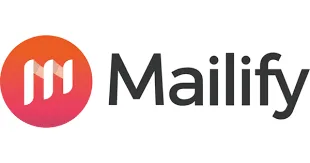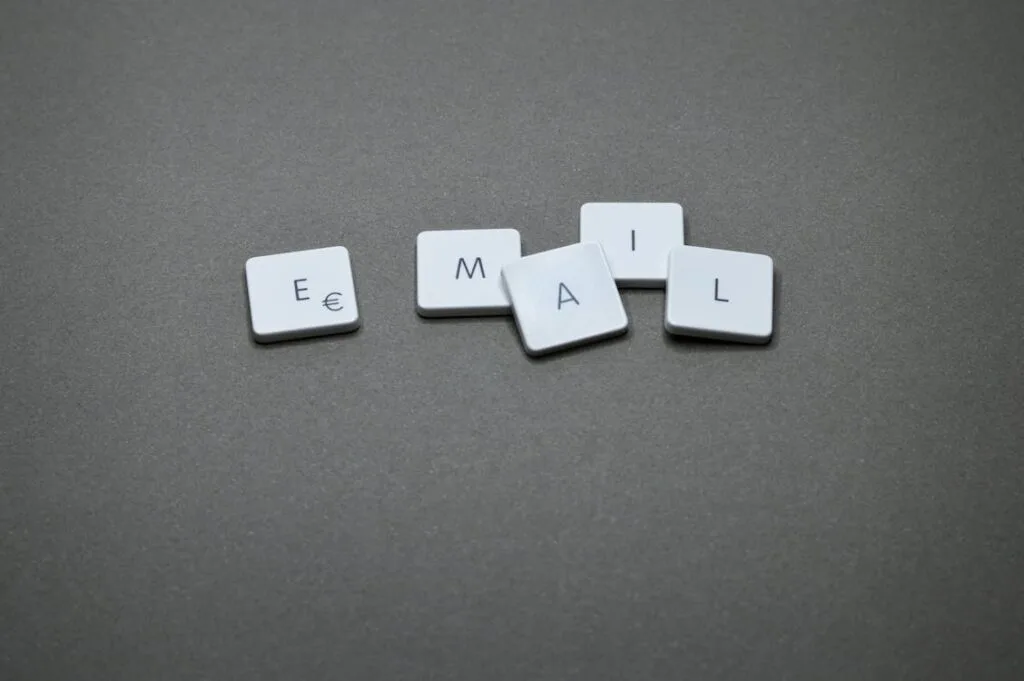In today’s digital age, email marketing remains a cornerstone of effective communication strategies for businesses of all sizes. Whether you’re a small startup or a large corporation, the ability to reach your audience directly through their inbox is invaluable. However, with a plethora of email marketing tools available, choosing the right one can feel like navigating a labyrinth. Two notable contenders in this space are Mailify and Pure360. Both platforms offer a range of features designed to enhance your email marketing efforts, but how do you decide which one is the best fit for your needs? In this article, we’ll dive deep into a comparison of Mailify and Pure360, focusing on key aspects that matter most to businesses. Let’s start with one of the most critical areas: Usability and User Experience.
| Mailify | Pure360 |
|---|---|
 |  |
| G2 Score – 4.3 out of 5 stars | G2 Score – Nil |
| TrustRadius Score – Nil | TrustRadius Score – 7.0 out of 10 |
Usability and User Experience
When it comes to choosing an email marketing tool, usability and user experience (UX) are paramount. After all, a tool can have all the features in the world, but if it’s not user-friendly, you’ll likely spend more time figuring out how to use it than actually creating effective email campaigns. Let’s take a closer look at how Mailify and Pure360 stack up in this area.
Mailify’s Approach to Usability
Mailify prides itself on its intuitive interface and ease of use. From the moment you log in, you’re greeted with a clean, straightforward dashboard that puts everything you need at your fingertips. Creating a new email campaign is as simple as clicking a button, and Mailify’s drag-and-drop editor allows you to design beautiful emails without needing a background in graphic design.
Moreover, Mailify offers a wide range of pre-designed templates, which can be a huge time saver, especially for those who are not design-savvy. These templates are not only visually appealing but also responsive, ensuring your emails look great on any device. This focus on usability extends to Mailify’s segmentation tools, making it easy to target your emails to specific groups within your audience without needing to be a data analyst.
Pure360’s Take on User Experience
Pure360 takes a slightly different approach to usability. While it also offers a user-friendly platform, its strengths lie in the depth of its features and customization options. Pure360’s platform is designed with the power user in mind, offering more advanced options for segmentation, personalization, and automation.
This doesn’t mean Pure360 is inaccessible to beginners, however. The platform provides guided workflows and helpful tooltips that make it easier to navigate its more complex features. Like Mailify, Pure360 also offers a range of templates, but where it really shines is in its ability to offer highly customized email experiences. This means you can tailor your emails to the nth degree, assuming you’re willing to spend a bit more time learning the ropes.
The Verdict on Usability and UX
Choosing between Mailify and Pure360 on the basis of usability and user experience largely depends on your team’s expertise and what you value more: simplicity and speed or customization and depth.
Mailify is arguably the better choice for businesses looking for a tool that’s easy to pick up and can produce beautiful emails without much effort. Its intuitive design and straightforward features make it an excellent option for those who are new to email marketing or who prefer to keep things simple yet effective.
On the other hand, Pure360 may be the go-to for businesses that prioritize having the ability to fine-tune every aspect of their email campaigns. Its platform offers the tools needed to create highly personalized and complex email strategies, but this comes at the cost of a steeper learning curve.
Ultimately, the best tool for you will depend on your specific needs, resources, and how much time you’re willing to invest in mastering the platform. Both Mailify and Pure360 offer robust solutions to enhance your email marketing efforts, but they cater to slightly different audiences.
Analytics and Reporting
In the realm of email marketing, data is king. The ability to track opens, clicks, bounces, and conversions is not just beneficial—it’s essential. However, the depth of analysis and the clarity of reporting can vary significantly between platforms. Here’s how Mailify and Pure360 approach analytics and reporting.
Mailify’s Analytics Features
Mailify offers a comprehensive analytics dashboard that provides a clear overview of your campaign’s performance. You can easily see how many people opened your emails, clicked on links, unsubscribed, or marked your email as spam. One of Mailify’s strengths is its real-time reporting, which means you can watch how your campaign performs the moment it goes live.
Another useful feature of Mailify is its heatmap tool. This tool visually represents where recipients are clicking within your email, offering invaluable insights into which parts of your email are most engaging. This can help you optimize the layout and content of future campaigns.
Mailify also integrates with Google Analytics, allowing you to track how email campaigns contribute to your overall website traffic and conversions. This integration is particularly useful for businesses that aim to understand the broader impact of their email marketing efforts on their digital presence.
Pure360’s Reporting Capabilities
Pure360 takes analytics a step further by providing not just basic metrics but also advanced insights into subscriber behavior. Beyond tracking opens and clicks, Pure360 allows you to delve into the customer journey, showing how subscribers interact with your emails in the context of their overall engagement with your brand. This level of detail is especially useful for businesses focused on nurturing long-term customer relationships.
Pure360’s reporting dashboard is highly customizable, enabling you to create reports that focus on the metrics most relevant to your goals. Whether you’re interested in conversion tracking, A/B testing results, or geographic performance, Pure360 offers the flexibility to tailor your analytics view to your needs.
Moreover, Pure360 provides predictive analytics features, using AI to forecast future trends based on your data. This can be a game-changer for businesses looking to anticipate subscriber behavior and adjust their strategies accordingly.
Making Sense of the Data
When it comes to analytics and reporting, both Mailify and Pure360 offer powerful tools, but the choice between them depends on the depth of insights you require. Mailify provides a user-friendly interface with all the essential analytics features, making it suitable for businesses that want straightforward reporting with real-time insights. Its heatmap tool is particularly beneficial for optimizing email content based on recipient engagement.
Pure360, on the other hand, is ideal for businesses that demand a deeper understanding of their subscribers’ behavior and the factors driving their engagement. Its advanced analytics and predictive capabilities offer a more granular view of campaign performance, making it possible to fine-tune strategies with a high degree of precision.
In conclusion, if you’re looking for ease of use and immediate insights, Mailify might be the better option. However, if you’re ready to dive deep into analytics and leverage AI for predictive insights, Pure360 could be the way to go. Both platforms bring valuable tools to the table, but your specific needs and goals will dictate which one is the best fit for your business.
Automation and Personalization
The power of email marketing lies not just in reaching out to your audience but in doing so in a way that feels personal and timely. Automation and personalization are the keys to achieving this, allowing you to send the right message to the right person at the right time. Here’s how our contenders stack up in these areas.
Mailify’s Automation Capabilities
Mailify offers a robust automation engine designed to make email marketing campaigns as efficient and effective as possible. With Mailify, you can easily set up automated workflows that trigger emails based on specific subscriber actions or milestones, such as signing up for a newsletter, making a purchase, or celebrating a birthday. This functionality enables you to nurture leads and build customer loyalty without manual intervention.
In terms of personalization, Mailify allows you to segment your audience based on various criteria, including demographics, behavior, and past interactions with your emails. This segmentation can then be used to tailor your emails, ensuring that the content resonates with each segment. Additionally, Mailify’s dynamic content feature lets you customize parts of your email content based on the recipient’s profile, making each email feel more personal and relevant.
Pure360’s Approach to Personalization and Automation
Pure360 places a strong emphasis on personalization, offering advanced tools that go beyond basic segmentation. With Pure360, you can leverage artificial intelligence to analyze subscriber behavior and preferences, enabling highly personalized email content that adapts to each individual’s interests and actions. This level of personalization aims to increase engagement and conversion rates by making each email feel as if it were crafted specifically for the recipient.
When it comes to automation, Pure360 provides a comprehensive suite of tools that allow for intricate automated campaigns. You can create detailed customer journeys that encompass a wide range of triggers, from subscriber activities to external events. Pure360’s automation also integrates with its personalization features, allowing automated emails to be as tailored and targeted as manual campaigns.
Choosing the Right Tool for Your Strategy
Both Mailify and Pure360 offer impressive automation and personalization capabilities, but the choice between them depends on the complexity of your campaigns and the depth of personalization you aim to achieve.
Mailify is an excellent choice if you’re looking for a tool that combines ease of use with powerful automation and personalization features. It’s well-suited for businesses that want to implement effective email marketing strategies without getting bogged down in overly complex tools.
Pure360, on the other hand, might be the better option for businesses that prioritize deep personalization and have the resources to invest in creating highly sophisticated automated campaigns. Its AI-driven personalization and detailed customer journey mapping offer a level of customization that can significantly enhance subscriber engagement.
In conclusion, both Mailify and Pure360 have their strengths when it comes to automation and personalization. Your decision should be guided by your specific needs, the complexity of your email marketing strategy, and how much you value deep personalization versus simplicity and ease of use.

Related: Check out our free SEO suite

Integration and Scalability
In the fast-paced world of digital marketing, tools that play well with others and can grow with your business are worth their weight in gold. Whether it’s CRM software, e-commerce platforms, or analytics services, the more smoothly your email marketing tool integrates with other systems, the more cohesive and effective your marketing efforts will be. Similarly, scalability ensures that as your subscriber list grows and your marketing needs become more complex, your chosen tool can handle the increased load without a hitch.
Mailify’s Integration and Scalability
Mailify boasts a wide array of integrations with popular services and platforms. From CRM systems like Salesforce to e-commerce platforms like Shopify, Mailify ensures that you can connect your email marketing efforts with your broader business operations. This connectivity is crucial for maintaining a unified approach to customer data and interactions, allowing for more targeted and effective email campaigns.
On the scalability front, Mailify is designed to grow with your business. The platform can handle large volumes of emails and subscribers without compromising performance. This is particularly important for businesses that anticipate rapid growth or experience seasonal spikes in their email marketing activities. Mailify’s pricing structure also reflects its commitment to scalability, offering different plans that businesses can upgrade to as their needs evolve.
Pure360’s Approach to Integration and Scalability
Pure360 emphasizes its capability to integrate deeply with a variety of systems, including advanced CRM solutions, web analytics tools, and e-commerce platforms. This integration capability is one of Pure360’s strong suits, offering more than just data syncing. It allows for sophisticated data-driven campaigns that leverage real-time insights from across your digital ecosystem. For businesses that rely heavily on data and need their email marketing tool to integrate closely with other systems for personalized and dynamic content delivery, Pure360 presents a compelling option.
When it comes to scalability, Pure360 is equipped to support businesses at every stage of growth. The platform is built to manage complex campaigns and large lists effortlessly, ensuring that your email marketing efforts can scale up as your business expands. Pure360’s advanced features, like AI-driven personalization and detailed segmentation, remain efficient and effective regardless of the size of your subscriber base, making it a reliable choice for growing businesses.
Deciding Between Mailify and Pure360
The choice between Mailify and Pure360 in terms of integration and scalability will largely depend on the specific needs of your business and the other tools you use. If you’re looking for a tool that offers straightforward integrations with a wide range of popular platforms and scales easily with your business, Mailify could be the ideal choice. Its user-friendly approach ensures that you can connect your email marketing with other aspects of your business without needing a deep technical understanding.
Conversely, if your business requires deep, data-driven integrations and you anticipate needing a high level of scalability for complex, personalized campaigns, Pure360 might be the better fit. Its emphasis on advanced integration capabilities and the ability to handle sophisticated email marketing strategies as your business grows makes it a strong candidate for businesses with ambitious growth plans.
In essence, both Mailify and Pure360 offer robust solutions for integration and scalability, but your particular business context—such as the complexity of your campaigns, the other tools you use, and your growth expectations—will dictate which platform is the best fit.
Pricing: Understanding the Costs Involved
The cost of an email marketing tool can be a decisive factor for many businesses, especially for small to medium-sized enterprises (SMEs) that need to carefully manage their budgets. Beyond just the headline figures, it’s important to consider what each plan includes, such as features, support levels, and any limitations on usage. Here’s how Mailify and Pure360 stack up in terms of pricing.
| Mailify | Mailify offers a unique credit-based system, where users buy email credits that can be used to send emails. Essential Plan: Includes basic features like email campaigns and forms. Pricing starts at around $69 for 5,000 credits. Premium Plan: Adds advanced features such as SMS marketing, automation, and landing pages. Pricing starts at around $129 for 5,000 credits. Exclusive Plan: Offers bespoke services and support, with pricing available upon request. Note: The number of emails you can send per credit varies based on the plan and additional features. |
| Pure360 | Pure360 offers personalized pricing based on the size and needs of the business. Email Marketing Module: Includes customizable templates, reporting, and analytics. Personalization Module: Offers advanced personalization and segmentation tools. Marketing Automation Module: Provides automation features for more sophisticated campaigns. Pricing details are not publicly listed, so interested users need to contact Pure360 for a custom quote. |
Mailify Pricing Structure
Mailify offers a tiered pricing model, designed to accommodate businesses of different sizes and needs. The pricing tiers are typically based on the number of emails sent per month and the number of contacts in your database. This model allows businesses to choose a plan that matches their email marketing volume, making it a flexible option for both small businesses and larger enterprises.
At the lower end, Mailify’s plans are quite accessible, making it a good choice for startups and SMEs just beginning their email marketing journeys. As you move up the tiers, you gain access to more advanced features, such as enhanced automation capabilities, more detailed analytics, and additional support options. Mailify also offers a free trial, allowing potential users to test the platform before committing to a paid plan.
One notable aspect of Mailify’s pricing is the inclusion of a pay-as-you-go option, which is ideal for businesses with fluctuating email marketing needs. This flexibility can be particularly beneficial for companies that do not run campaigns regularly but need the capability to send out blasts occasionally without committing to a monthly fee.
Pure360 Pricing Details
Pure360 takes a more customized approach to pricing. Rather than offering set tiers, Pure360 prefers to tailor its pricing based on the specific needs and requirements of each business. This means that to get an accurate idea of what Pure360 will cost, you’ll need to contact their sales team to discuss your needs and obtain a quote.
This bespoke pricing model can be advantageous for businesses with unique requirements or those looking for a package that’s precisely tailored to their needs. It allows for greater flexibility and ensures that you’re not paying for features or capacities you don’t need. However, the downside is that it can be harder to get an immediate sense of the cost without going through the inquiry process.
Pure360’s focus on customized pricing suggests that it may be more suited to businesses with specific needs or those looking for a high degree of personalization in their email marketing efforts. It’s also indicative of Pure360’s positioning towards offering more advanced features and services, which may appeal to larger businesses or those with more complex email marketing strategies.
Making the Right Choice for Your Budget
When it comes to choosing between Mailify and Pure360 based on pricing, the decision will largely depend on your business’s specific needs, budget, and how you prefer to manage your costs. Mailify’s tiered pricing and pay-as-you-go options offer flexibility and predictability, making it a solid choice for businesses looking for straightforward pricing and scalability. On the other hand, Pure360’s customized pricing can offer tailored solutions for businesses with unique needs or those willing to invest in a more personalized service.
Ultimately, the best approach is to carefully assess your email marketing requirements, consider your budget, and then compare the offerings of each platform. Don’t hesitate to reach out to sales teams for a detailed quote and ask about any hidden costs or potential discounts. Remember, the goal is to find a platform that not only fits your financial parameters but also supports your marketing objectives effectively.
Customer Support and Resources
Effective customer support and a wealth of educational resources are indispensable, especially in a field as dynamic and nuanced as email marketing. They not only help resolve technical issues but also empower users to improve their marketing strategies. Here’s an overview of the support and resources offered by Mailify and Pure360.
Mailify’s Support and Educational Offerings
Mailify is known for providing a solid support system for its users. They offer multiple channels of support, including email, phone, and live chat, ensuring that users can reach out for help through their preferred method. The response times are generally quick, which minimizes downtime and helps businesses keep their email campaigns running smoothly.
In addition to direct support, Mailify places a strong emphasis on education and self-help resources. They provide a comprehensive knowledge base that covers a wide range of topics, from getting started with the platform to leveraging advanced features. Moreover, Mailify offers webinars, tutorials, and a blog filled with email marketing tips and best practices. These resources are invaluable for both beginners and experienced marketers looking to enhance their skills and stay updated on the latest trends.
Pure360’s Approach to Customer Support
Pure360 takes customer support seriously, offering personalized assistance tailored to the needs of each customer. Like Mailify, they provide support through various channels, including phone and email. One of the standout features of Pure360’s support is the dedicated account management provided to each customer. This means that users have a go-to person for strategic advice, campaign optimization tips, and technical issues. This level of personalized support can be particularly beneficial for businesses with complex email marketing needs or those looking to maximize the ROI of their campaigns.
Alongside direct support, Pure360 offers a rich library of resources aimed at educating users. This includes detailed guides, case studies, and whitepapers that not only help users navigate the platform but also offer insights into email marketing strategies and trends. Pure360 also conducts webinars and training sessions designed to help users get the most out of their platform and stay at the forefront of email marketing techniques.
Evaluating the Impact of Support and Resources
When deciding between Mailify and Pure360, considering the type and quality of customer support and educational resources they offer is crucial. Both platforms excel in providing their users with the necessary tools and knowledge to succeed in their email marketing endeavors.
Mailify might be more appealing if you value a wide range of self-help resources and multiple support channels for quick issue resolution. Its comprehensive knowledge base and educational content are excellent for businesses that prefer to learn and solve problems independently.
Pure360, on the other hand, might be the better choice for businesses looking for more personalized support and strategic guidance. The dedicated account management and tailored support can be a significant advantage for companies with specific needs or those who wish to deeply integrate email marketing into their overall business strategy.
Ultimately, the choice between Mailify and Pure360 should consider not only the features and pricing of each platform but also the level of support and resources they provide. Effective support can enhance your email marketing efforts, helping you to navigate challenges and capitalize on opportunities more efficiently.
Conclusion
In summing up the comparison between Mailify and Pure360, it’s clear that both email marketing platforms offer distinct advantages tailored to different business needs and preferences. Mailify shines with its user-friendly interface, making it an excellent choice for those new to email marketing or businesses that prioritize ease of use and efficiency in creating and sending emails. Its straightforward pricing model and robust support resources further enhance its appeal to small and medium-sized enterprises looking for a cost-effective, scalable solution.
Pure360, on the other hand, stands out for its advanced personalization and automation features, catering to businesses aiming for a deeper engagement with their audience through highly customized email campaigns. The platform’s focus on detailed analytics and predictive insights, along with its tailored pricing structure, makes it suitable for larger organizations or those with specific, complex email marketing requirements.
Read next:
- Understanding KPIs for Travel SEO
- Interactive Content Can Skyrocket Your Lead Capture. We Show How!
- How to Utilize Dynamic Content in Email Campaigns
- What is a SMART Plan? And, Why You Need One
- How AI LLMs will Revolutionize SEO (in 2023): Our Insights!






















Comments are closed.